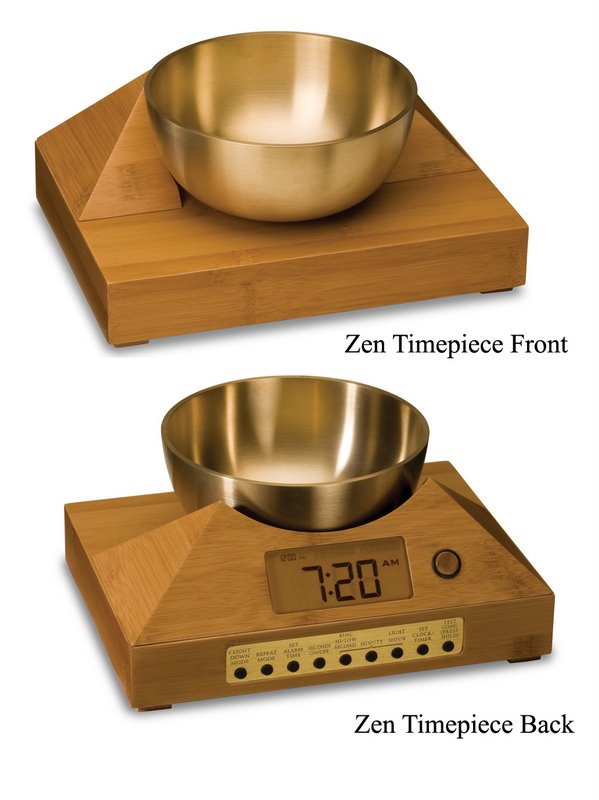
Meditation - Even a Little Helps - Ukiyoe - Genji Monogatari Musee Saint Remi
You don’t have to be a monk.
Scientific literature is brimming with research showing that transcendental meditation literally changes the structure of the human brain, at least among persons who practice “mindfulness,” as it is sometimes called, for many years.
But new research shows that even 20 minutes a day, four days a week, can produce an impressive increase in critical cognitive skills.
“Simply stated, the profound improvements that we found after just four days of meditation training are really surprising,” psychologist Fadel Zeidan said in releasing the study. “It goes to show that the mind is, in fact, easily changeable and highly influenced, especially by meditation.”

Meditation - Choose a Gong Meditation Timer for Your Practice
Zeiden led the study while finishing his doctoral studies at the University of North Carolina, Charlotte. He is now a researcher at Wake Forest University School of Medicine.
Benefits Unlikely to Last Long Unless You Keep at It
If other scientists replicate his work, it means it may not be necessary to lock yourself in a closet for hours at a time to benefit from this Far Eastern therapy.
That said, however, this research does not suggest that more would not be better, and Zeidan cautioned that while a modest effort can produce big results, they are not likely to last long unless you keep it up over an extensive period of time. Like years.
And while there are many books out there explaining “do-it-yourself” techniques, the participants in the North Carolina study were trained professionally, although for a total of only 80 minutes. Those who received the training were as much as 10 times better in their ability to remain focused on a subject while retaining other information.
All 63 participants were students, and only 49 completed the experiment, suggesting this may not be as easy as it sounds. The students were divided into two groups, and all were subjected to a broad range of behavioral tests on mood, memory, visual attention, and vigilance. Then one group listened to a reading of J.R.R. Tolkein’s “The Hobbit.”
Meditation Training Was Basic Buddhist Meditation
The other group received the meditation training for an equivalent period of time.
The two groups were equal on the behavioral tests at the beginning of the experiment. Both scored about the same on mood testing in the second phase, but the students who received the meditation training scored significantly higher on cognitive tests.
In one test, students were shown an image, called a stimulus, on a computer monitor and told to identify it every time the stimulus appeared. If they got it right, the images would speed up, making it more difficult.
The students who received the meditation training averaged about 10 consecutive correct answers while the group that listened to the reading averaged only about one.
The training itself was pretty basic Buddhist meditation. Participants were told to relax, keep their eyes closed, and focus on the flow of their breath at the tip of their nose. If their thoughts strayed, they were instructed to note the thoughts, and resume concentrating on their breath.
Sounds preposterous, right? Why would something that simple change the brain?
Meditation Changes Structure of the Brain, Research Shows

Meditation - Use a Gong Meditation Timer for Your Practice
Numerous studies by very serious scientists show at least partly why it works, at least over the long haul.
— Buddhist Insight meditation, practiced 40 minutes a day, literally changed the structure of the brain, according to a study by researchers from Yale, Harvard, Massachusetts General Hospital and the Massachusetts Institute of Technology. That 2005 study was based on functional magnetic resonance imaging that showed an increase in thickness of regions of the brain that are important for sensory, cognitive and emotional processing. The changes are expected to be “long lasting,” the researchers said.
— Brain imaging at the University of Wisconsin-Madison in 2008 showed that brain circuits used to detect emotions and feelings were “dramatically changed” in subjects who had extensive experience practicing compassion meditation. That suggests we can train ourselves to be compassionate, much like we train to play a musical instrument. The participants in this study, by the way, were Tibetan monks with at least 10,000 hours of meditation.
— Can it reduce pain? Yes, according to research in London involving 12 monks with 30 years experience. Brain scans showed the monks had a 40 to 50 percent lower brain response to pain than 12 persons who had no training in transcendental meditation. But here’s the surprising finding. When the 12 untrained persons were trained for five months, they also lowered their pain response by a comparable 40-50 percent.
Continued Practice Needed for Long-Term Stable Changes
Numerous other studies have shown real physical changes ranging from enhanced immunity to a slowing of the aging-related atrophy of some areas of the brain.
So this is big stuff, but in a telephone interview Zeidan offered a few words of caution.
“By no means will four days of practice be it. This just suggests that the effect of meditation can be directly perceived and there are some short term benefits,” he said.
“We were really surprised with the findings. There are some dramatic differences in cognition, but it’s kind of like going to the gym and working on a bicep. You go to the gym four days and you might be sore, there might be some muscle strength increase, but that’s it. If you stop, your muscle is going to go back.
“So you have to continue to practice to experience more long term stable changes,” he added. But you don’t have to become a monk.
adapted from worldnewsreport.com by Lee Dye
As beautiful to see as it is to hear, the Zen Timepiece is also a decorative accessory that adds elegance to any room. Its wood platform (available in cherry or maple) is designed to be positioned either with the clock’s digital display to the front, or turned around, with the bowl-gong in the front. Although the clock looks good both ways, when the digital display is turned to the back it accentuates the clock’s natural theme and helps reduce the visual clutter of electronic modernity in one’s interior environment.

Gong Meditation Timer for Your Stillness Practice
At a suggested retail price of $199.95, it may be the world’s most expensive alarm clock, but according to Steve McIntosh, it’s definitely worth it: “Waking up in the morning is a metaphor for life, and anything that adds grace and beauty to this daily process is a good investment. When you use the Zen Timepiece it’s like waking up in a Zen temple.”

Visit our Gong Meditation Store - Boulder, CO
Now & Zen – The Gong Meditation Store
1638 Pearl Street
Boulder, CO 80302
(800)779-6383
Posted in Meditation Timers, Meditation Tools, mindfulness practice, Now & Zen Alarm Clocks, Zen Timepiece by Now & Zen, Zen Timers